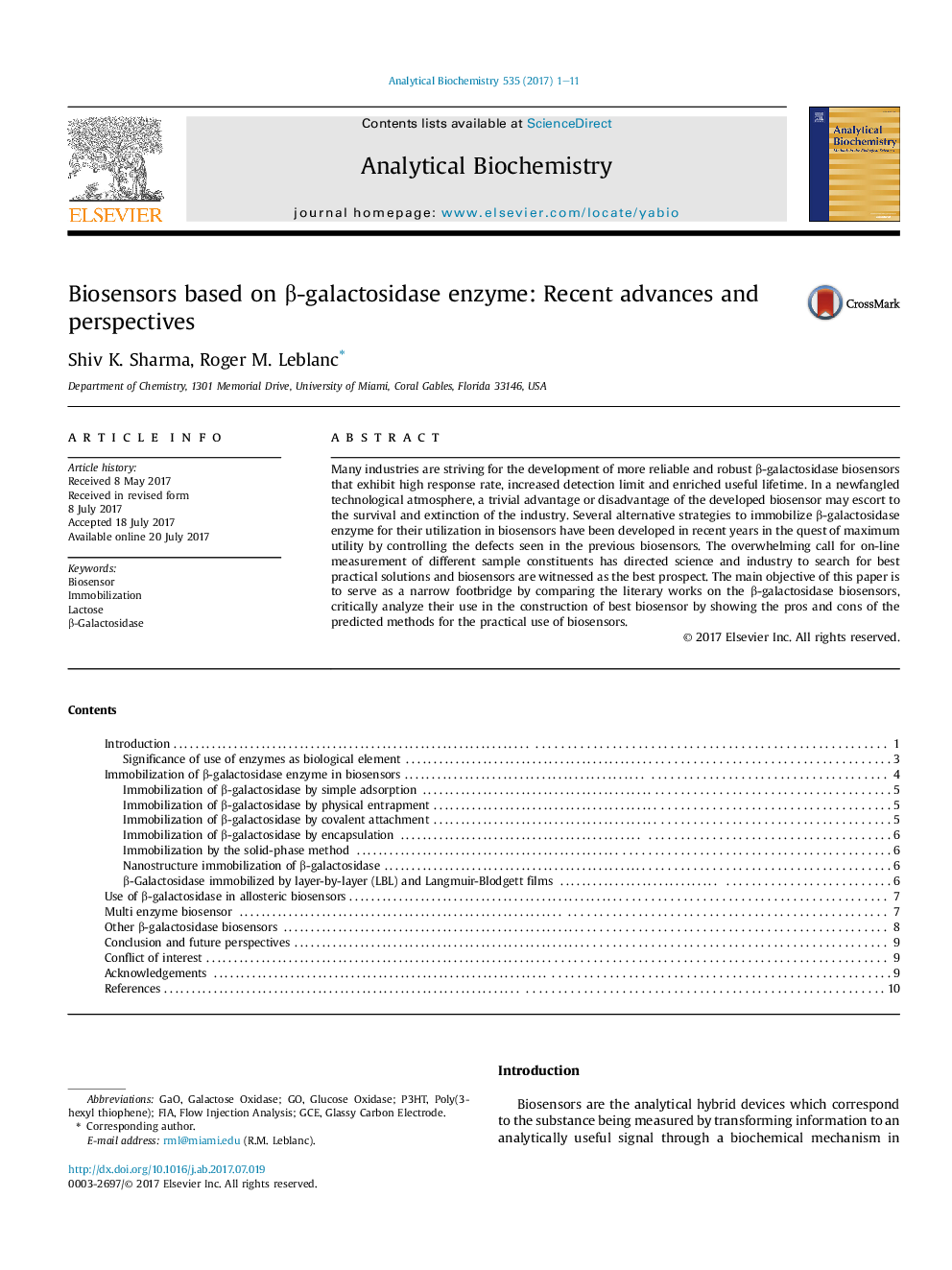| Article ID | Journal | Published Year | Pages | File Type |
|---|---|---|---|---|
| 5131481 | Analytical Biochemistry | 2017 | 11 Pages |
Many industries are striving for the development of more reliable and robust β-galactosidase biosensors that exhibit high response rate, increased detection limit and enriched useful lifetime. In a newfangled technological atmosphere, a trivial advantage or disadvantage of the developed biosensor may escort to the survival and extinction of the industry. Several alternative strategies to immobilize β-galactosidase enzyme for their utilization in biosensors have been developed in recent years in the quest of maximum utility by controlling the defects seen in the previous biosensors. The overwhelming call for on-line measurement of different sample constituents has directed science and industry to search for best practical solutions and biosensors are witnessed as the best prospect. The main objective of this paper is to serve as a narrow footbridge by comparing the literary works on the β-galactosidase biosensors, critically analyze their use in the construction of best biosensor by showing the pros and cons of the predicted methods for the practical use of biosensors.
